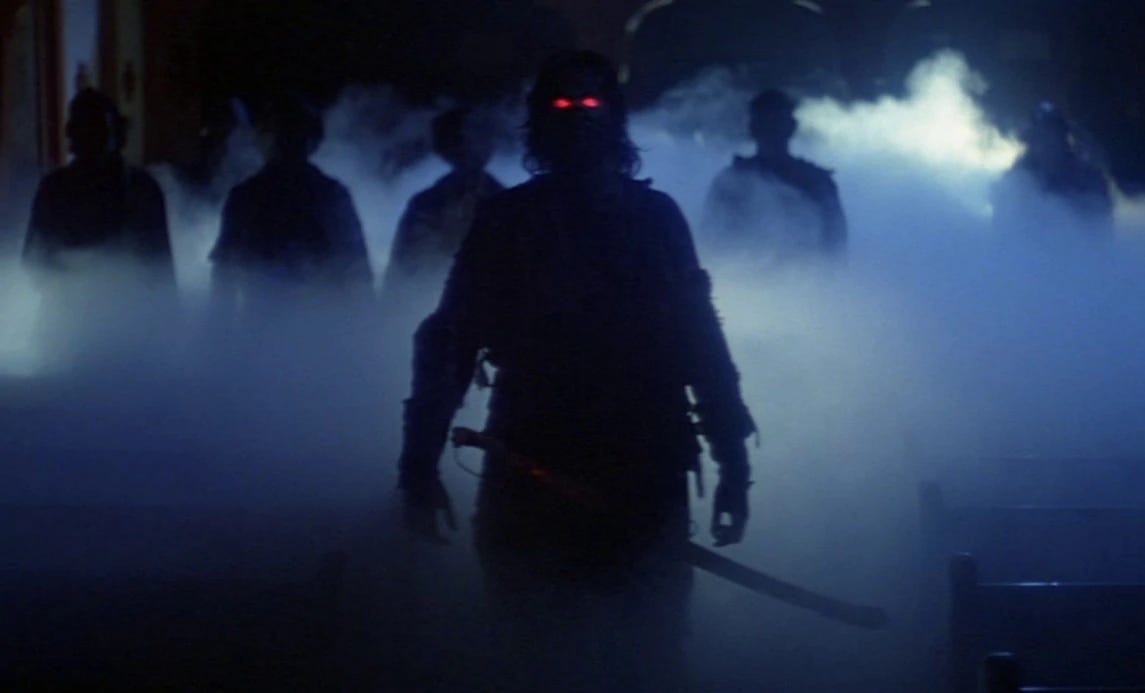
A strange yarn appeared out of the gloom in the September 1926 issue of Weird Tales. Penned by a virtually unknown scribbler named H.F. Arnold, “The Night Wire” could be one of the most influential pulp tales that you have never heard of. Emphasis on could.
The story is told from the perspective of an unnamed worker living in a port town somewhere between Los Angeles and Seattle. The man’s job involves the news, and his primary task is to compose news bulletins (“wires”) while the rest of the world sleeps. As he says in the beginning,
“Once in a long time you prick up your ears and listen. You've heard of some one you knew in Singapore, Halifax or Paris, long ago. Maybe they've been promoted, but more probably they've been murdered or drowned. Perhaps they just decided to quit and took some bizarre way out. Made it interesting enough to get in the news.”
It would seem that the job oscillates between boring and morbid. The only succor comes from professionalism, which is embodied by John Morgan, another employee and a “double man” who can write two stories at the same time using two typewriters. On the night of September 16, a strange wire comes in from a town named Xebico. The odd name intrigues the narrator, who begins to read of the town’s bizarre affliction.
“The heaviest mist in the history of the city settled over the town at 4 o'clock yesterday afternoon. All traffic has stopped and the mist hangs like a pall over everything. Lights of ordinary intensity fail to pierce the fog, which is constantly growing heavier.
“Scientists here are unable to agree as to the cause, and the local weather bureau states that the like has never occurred before in the history of the city.”
Subsequent wires tell of the fog increasing in size and potency. In one wire, a church’s sexton reveals that the fog originated in the local churchyard, with its first victims being the families living near the burial ground. Eventually, Xebico is consumed entirely by the fog. A rescue team is sent in but to no avail. The wires continue to come in; however, and they speak of strange lights, weird heat, and a street full of people that keep getting closer and closer.
At the sake of spoiling the reveal, these Xebico wires were produced by Morgan. The narrator learns at the end of the story that Morgan died at his desk and composed the entire fog story after expiring. “The Night Wire” gives us a vision of the end, but, more importantly, it provides the earliest example of the dangers-in-the-fog narrative.
On February 1, 1980, American maestro John Carpenter released The Fog. A gothic horror counterpoint to his slasher masterpiece Halloween, The Fog is a slow, creepy, and suspenseful film about an evil fog that takes over the California town of Antonio Bay. Unlike in “The Night Wire,” The Fog has an explanation for why the thick clouds carry so much menace: back in 1880, a ship carrying lepers called the Elizabeth Dane was deliberately sunk and robbed of its gold by the first settlers of Antonio Bay. A hundred years later, the hungry ghosts of the Elizabeth Dane have returned for their vengeance.
The Fog should be rightfully considered one of Carpenter’s best films, although it is often overlooked because it came out after Halloween and before The Thing, the latter of which is considered a perfect movie by many. The Fog has obvious pulp elements, and in some ways its plot borrows from “The Night Wire.” (There is no evidence that Carpenter has ever read Arnold’s story.)
The Fog was not the only killer fog story of 1980, either. That same year, a horror anthology entitled Dark Forces published Stephen King’s “The Mist.” Set in the small town of Bridgton, Maine, “The Mist” concerns a group of people trapped inside of a supermarket following a severe storm. A heavy fog lingers behind in the storm’s wake, and this fog appears to contain dinosaurs and other monstrous creatures. While The Fog is a classic ghost story, “The Mist” is mostly a study in how people react to being besieged and bewildered by forces out of their control. Instead of vengeful specters with rational motivations, the creatures in “The Mist” are blind and irrational and merely want to feed. Still, “The Mist,” The Fog, and “The Night Wire” all make great mileage out of the primordial fear of the unseen and obscure. A heavy fog renders the world strange and invisible, and that will always be scary.
Again, there is absolutely no proof that a little Weird Tales story influenced a major motion picture or one of America’s most popular writers. It does seem that a certain synchronicity touched all three men, including two (Carpenter and King) around the exact same time. I, a dedicated pulpster, would prefer to think that the humble Arnold left an outsized impact after September 1926. It was his bizarre Xebico visions, I think, that unknowingly gave a generation of weird artists the idea that there could be something in the fog. Something evil, something hungry, or something simply unknown.
Thanks for everything, Arnie.




